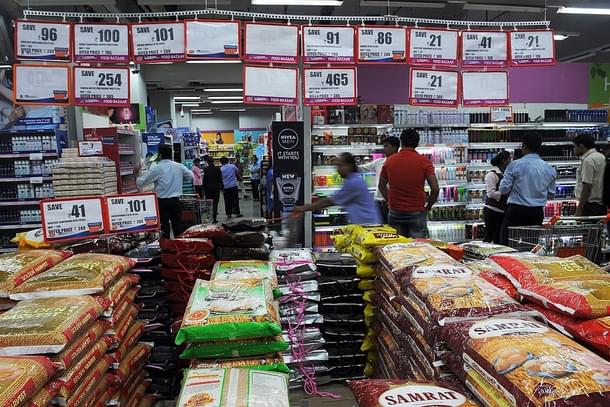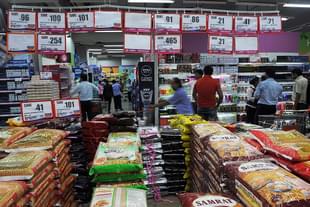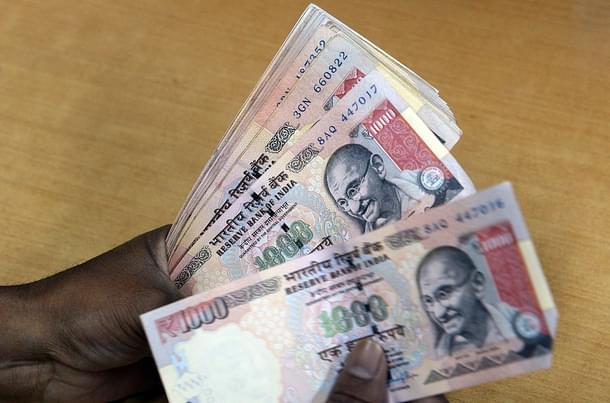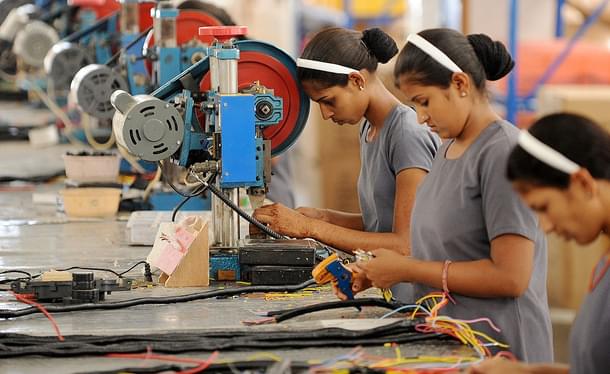Economy
Q3 Numbers Should Keep The Government Pushing At Growth Front, Not Lull It Into Complacency
Seetha
Mar 02, 2017, 11:13 AM | Updated 11:13 AM IST
Save & read from anywhere!
Bookmark stories for easy access on any device or the Swarajya app.


So, the economy seems to have weathered the demonetisation storm rather well, going by the estimates for the whole of 2016-17 as well as the third quarter (Q3, October-December) put out on February 28. Just to recap, the Central Statistical Office (CSO) is sticking to its 7.1 per cent growth estimate for the full year (when the general consensus seems to be that it will be just short of 7 per cent). And it put the Q3 growth at 7 per cent, something even demonetisation non-sceptics were not expecting.

So could there be some statistical jugglery at work, as the many disbelievers will hint, pointing to a host of other evidence? Calling it jugglery may be a tad much, but some revisions in earlier estimates could have bumped up the Q3 growth a bit.
A State Bank of India Ecowrap report points out that the steep downward revision of the Q3 2015-16 figures could have led to the higher-than-expected growth in Q3 of this fiscal (a lower base will give higher growth). Third quarter GDP at current prices in 2015-16 was initially estimated at Rs 34.81 lakh crore; that has now been revised to Rs 34.46 lakh crore. At constant prices the downward revision has been from Rs 28.52 crore to Rs 28.30 crore.
As for the full year, the figures for both Q1 (April-June) and Q2 (July-September) have been revised upwards, which means that the economy did better in those two quarters than earlier estimated, thus nullifying the effect of demonetisation, which really affected the second half of Q3 (mid-November to end-December).
But there may be a lot of activity (or non-activity, as the critics will insist) that may not have been captured yet and so it would be both inaccurate and unfair to attribute the picture presented by the latest figures to data revisions (which are routine) alone. So let both sceptics and non-sceptics hold their respective horses till May 31 when the full year figures are out (or perhaps till January 2018 when the final estimates are available).
But forget Q3, what about the next quarter and the year ahead? Even if the economy has shrugged off demonetisation as a minor irritant, does that mean it has conquered all challenges before it and is all poised for take off? Certainly not.
The early data coming in on Q4 (January-March) is a bit mixed. Only four of the eight core industries (coal, crude, natural gas and fertilizers) have done better in January over December; in the case of fertilizers the negative growth continues but is an improvement over December. Cement production in January saw a 13 per cent decline and the growth in steel production is also lower than in December. However, the April-January figure for this fiscal (4.8 per cent) is a vast improvement over the 2.9 per cent growth of April-January of the last fiscal.
On the other hand, the manufacturing production managers index (PMI) shows manufacturing activity set to pick up. The Nikkei India Manufacturing PMI for February moved up for the second month in a row. “The upturn in output reflected improved demand from both the domestic and external markets. The total volume of incoming new work increased for the second month in a row, whereas new export orders expanded for the first time since November 2016,” the PMI report notes.

It’s now time for the government to focus on some long-standing challenges.
There’s the external environment for one, with protectionism on the rise and global recovery still fragile. But there’s little the government can do here, except go all out to make Indian exports globally competitive.
But that can happen only when domestic challenges are successfully tackled and these are the main hurdles to the economy’s growth. Private consumption may be quite robust even in the wake of demonetisation, but there’s no denying that investment demand has to be revived.
Capacity utilisation in the manufacturing sector is still hovering at around 72 per cent. An India Ratings note on Economic Outlook for 2017-18 points out that the single biggest reason for stalled projects is “unfavourable market conditions”. This has held up 201 out of 1291 projects (the largest number, 358 stalled projects, comes under a broad category of others). Lack of promoter interest (92) and lack of funds (148) were other reasons, apart from land acquisition issues (131) and lack of clearances (170, of which 109 were non-environment clearances).
While presenting this note last month, Sunil Sinha, principal economist, India Ratings, pointed out that even when clearances were granted, projects were still not taking off. That’s because most of the projects are funded by public sector banks reeling under the burden of toxic assets. India Ratings has forecast that the non-performing assets (NPA) burden of public sector banks will touch 12.1 per cent by the end of this fiscal (this does not include the restructured assets).
And according to this report there’s a Rs 55,000 crore NPA time bomb ticking in the micro small and medium sector as well. The International Monetary Fund red-flagged the NPA issue at its annual consultations. The Economic Survey has warned about this. This will continue to be a dark cloud hovering over the economy.
The goods and services tax (GST) appears all set to roll out from July 1, going by the optimistic assertions of economic affairs secretary Shaktikanta Das. But how it is implemented will be crucial in determining the impact on the economy. There’s no getting away from the fact that for political reasons the government had to sign off on a sub-optimal GST with five rates. As it is GST is supposed to have a dampening effect in the early years, and what a less than ideal structure does will need to be seen.
Given the reluctance of the private sector to invest – gross fixed capital formation as a ratio of GDP is set to fall to 26.9 per cent in this fiscal from 30.3 in 2014-15 – the government is expected to step in to perk things up with capital expenditure. But is central government capex the right answer? Despite this government’s focus on capital expenditure, this has still not reverted to the 2 per cent of GDP mark that it touched in 2010-11. On the other hand, the states are doing much better in this respect. An India Rating research note on state finances points out that the aggregate capital expenditure of states increased to 3.45 per cent of GDP in 2015-16 against 2.51 per cent in 2014-15. Perhaps states should be encouraged to do the heavy lifting on capital expenditure.
India may certainly have retained its position as the fastest-growing economy, but, to quote a controversial remark by a controversial Reserve Bank of India governor, this is like a one-eyed person being the king in the kingdom of the blind. There’s a lot more that needs to be done to take advantage of the sweet spot India finds itself in. This is no time for complacency.
Seetha is a senior journalist and author




